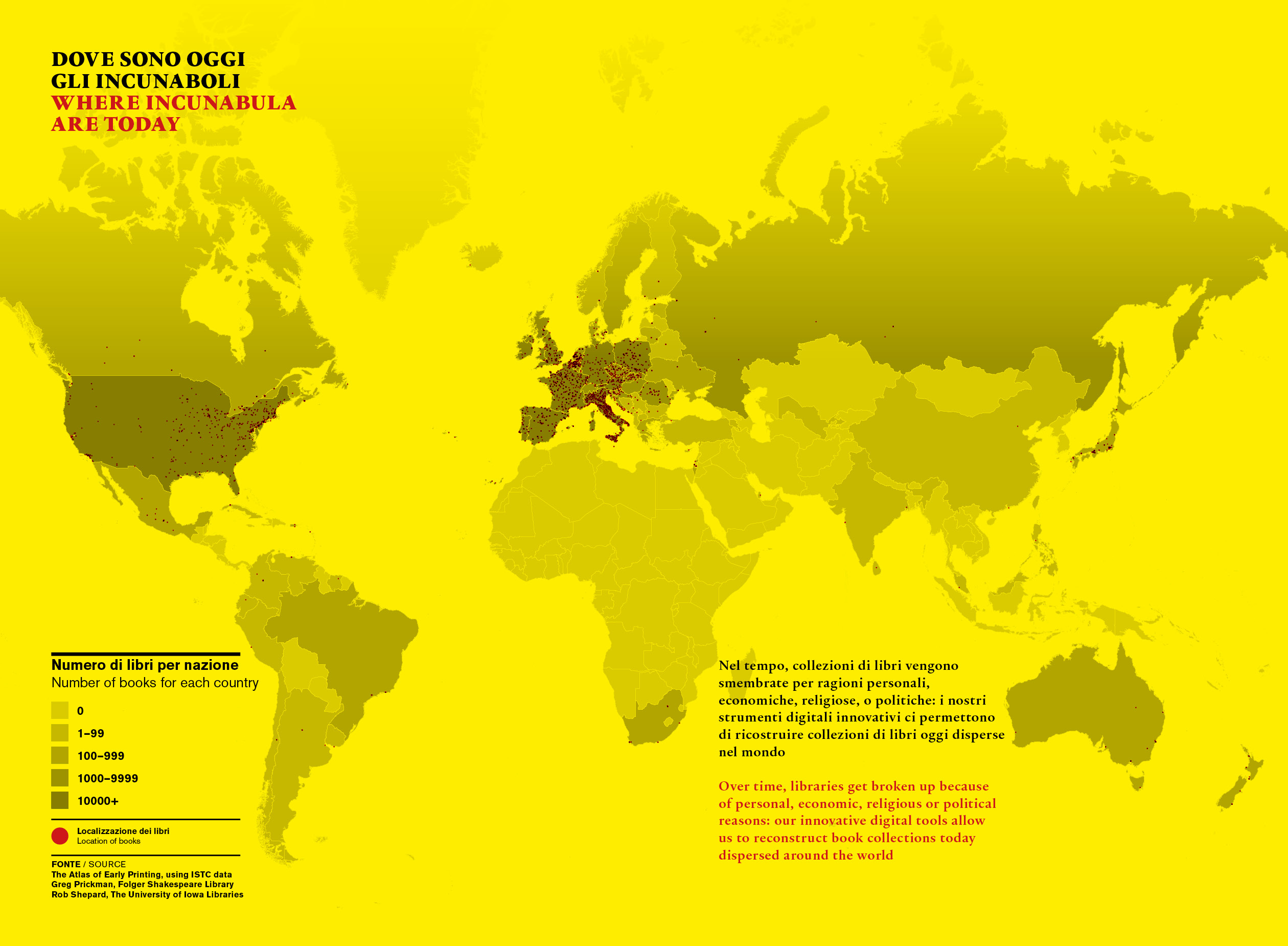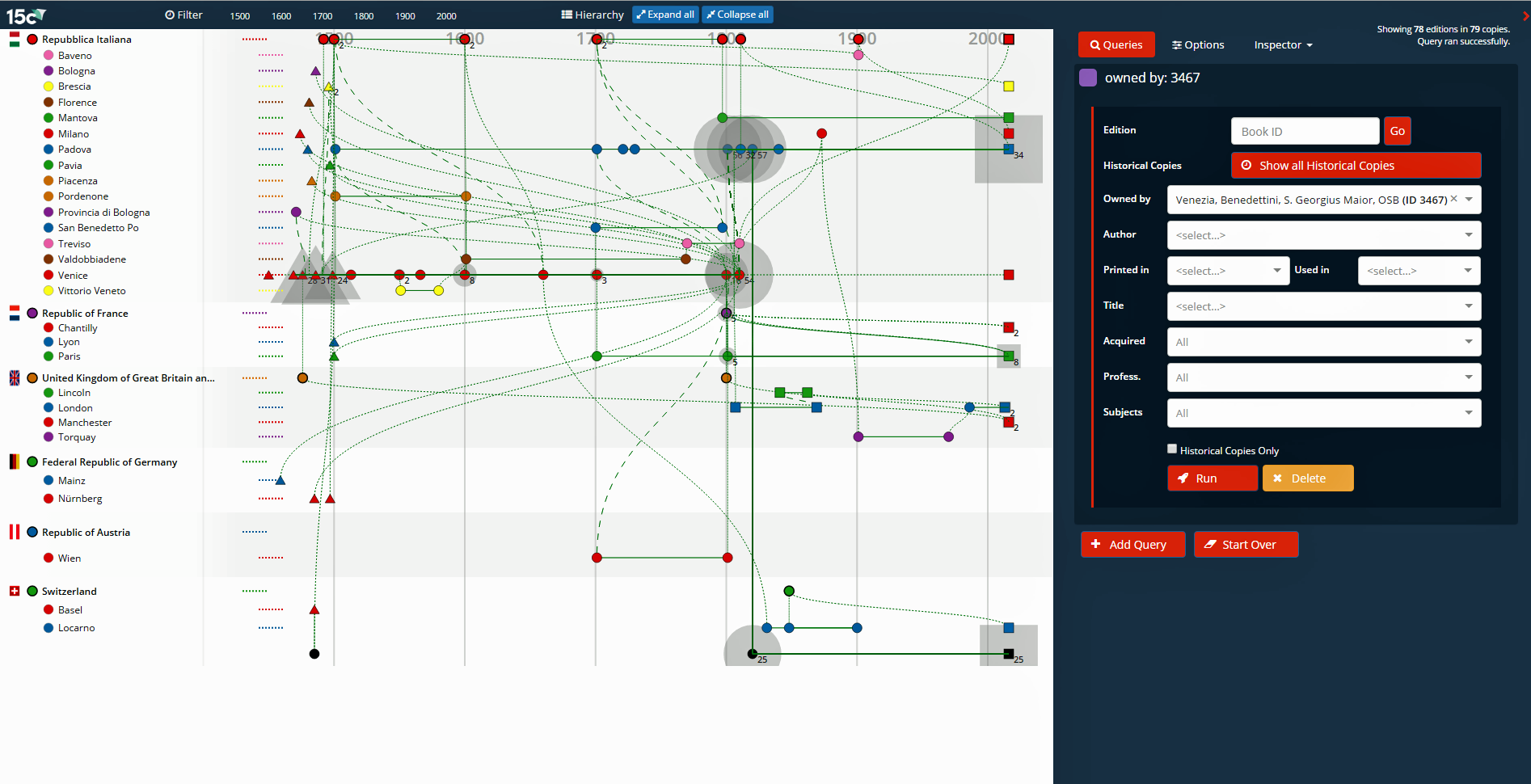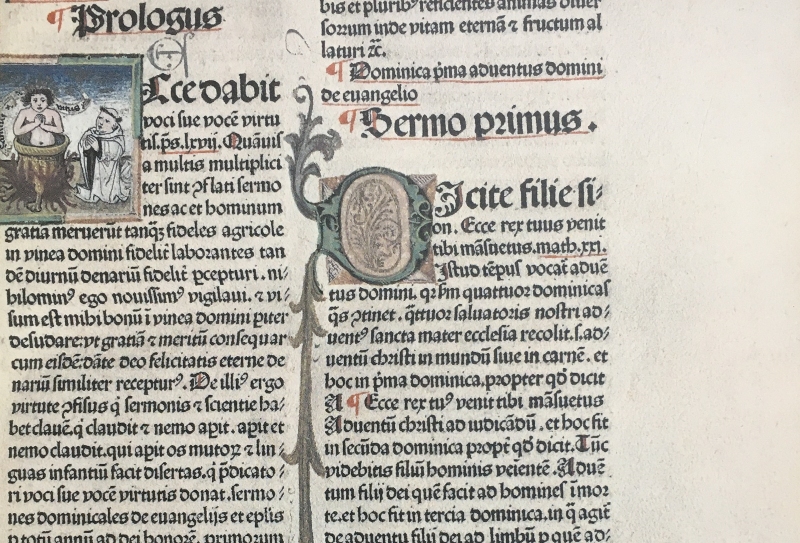Project Description

Printing R-Evolution 1450-1500. Fifty Years that Changed Europe
Movement
Movement
Lost and found
Over time libraries get broken up because of personal, economic, religious or political reasons: our innovative digital tools allow us to reconstruct book collections today dispersed around the world. By cataloguing in MEI the provenance information of incunabula in collections around the world, we are virtually reconstructing thousand of dispersed libraries. One example, the Benedictines of San Giorgio Maggiore in Venice.
The Dispersal of the Library of San Giorgio Maggiore of Venice
The story of the reconstruction of the collection of incunabula of the Benedictines of San Giorgio Maggiore of Venice, a dispersed library using evidence from the books themselves in combination with documentary sources
A visualization of the movement of the copy of Homerus: printed in Florence, then used in Naples, annotated in Italy, owned in Belluno, finally in San Giorgio Maggiore, then taken away to Paris, then returned, and it is in Venice today
We are doing the same reconstruction for over 20,000 European and American book collections. They can be searched in the Owners of Incunabula database, which is linked to MEI.
Type an asterisk (*) in the free search window to see all the entries. In the facets, on the right-hand side, they are further grouped by characterisation (religious, lay, aristocracy, royalty), country, and gender.
How does the visualization work?
An introduction to the 15cV visualization suite, which tracks the circulation of books, and of the texts they contain, over time and space, using data from the databases MEI and Text-inc
This book was purchased in 1483 by the Carmelite Vitus Wollfram for his studies, decorated and annotated by him. It remained in Germany until the 19th century. It is now in the United States.
Where a book is today tells us little of its past 500 years of history. What are the stories of the over 50,000 incunabula now in the United States? We are reconstructing their links to European cultural heritage and tracing their journeys from Europe to the United States: when, how, and why.



